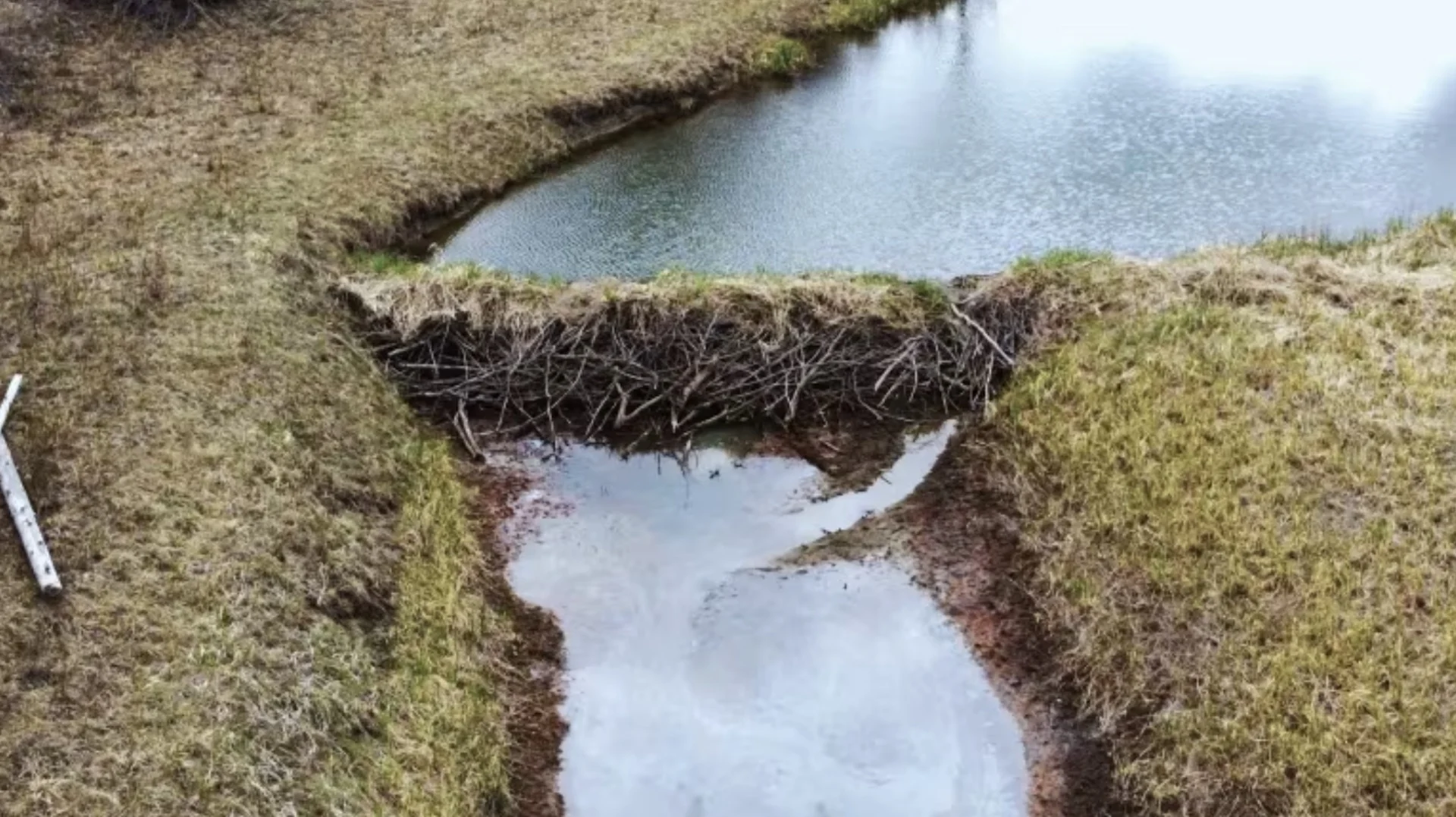
Building beaver dams to help restore B.C.'s drying Columbia Wetlands
Conservationists are trying to help restore a vast area of wetland in southeastern British Columbia by doing what beavers do: building dams.
The Columbia Wetlands, which encompass an area of about 260 square kilometres in the East Kootenay, are an important resting and breeding grounds for over 160 species of migratory birds and other wildlife, like elk, deer and grizzly bears, says Suzanne Bailey, president of the Columbia Wetlands Stewardship Partners (CWSP).
SEE ALSO: Answer to high ocean acidity may lie in carbon transfer from wetlands
But the area has been drying for decades due to human activity and climate change, and certain parts that once held open water all year long are now often dry in the winter and spring.
"If we don't have open water, where do all these birds go in the spring?" Bailey said.
Some areas have lost over 16 per cent of permanent open water in the last few decades, according to Living Lakes Canada, a non-government organization and CWSP member that works to protect freshwater resources.
This January's record-low snowpack is another concern, Bailey says, as a combination of seasonal snowmelt, glacial snowmelt and rain raise the water table two to three metres in the spring and early summer.

From left: Jessica Holden, Kat Hartwig, Suzanne Bailey and Catriona Leven. The four women are part of a team working to restore the Columbia Wetlands near Invermere, B.C. They are pictured above the wetlands on Jan. 26. (Corey Bullock/CBC News)
But teams with CWSP and Living Lakes Canada are doing what they can to restore the wetlands by building dams in areas beavers have vacated.
While beavers reside throughout the wetlands, the animals have left the western upland area at the base of the Purcell Mountains. With their dams unmaintained, water has flowed over and created a stream where the wetland once was.
Building back those small dams will help spread water out across the valley again, Bailey says.
"That recharges the groundwater. That provides all kinds of habitat for organisms that live there, so, higher biodiversity," she said.
'We go out and we get very muddy'
Known as beaver dam analogues, the man-made structures are made of willow posts, clay, mud, burlap sacks and debris. The teams are aiming to repair dams at nine identified sites.
"We go out and we get very muddy, is the first step. We're trying to do it sort of low key and as naturally as possible ... We're just taking directions from [the beavers] because they know what they're doing," said Catriona Leven, an ecologist with CWSP.
WATCH: Restoring Canada’s wetlands could help alleviate extreme weather impacts
Jessica Holden, a wetland technician with Living Lakes Canada who is also helping to build the dams, says it's a "mystery" why the beavers left the upland area in the first place, and they can't be re-introduced until researchers find out why.
"If we don't know why they left and why their populations collapsed, we don't want to put them back in there, because the same thing is likely to happen again," said Holden.
Part of that research work involves talking to Indigenous elders about the history of the area and looking at hunting and trap line history, she said.
The beaver dam project is part of a larger four-year study into 38 different areas of the Columbia Wetlands, covering almost 10 per cent of their total area.
With World Wetlands Day on Feb. 2, the organizations hope to raise awareness about their work.
More large-scale initiatives needed, steward says
The Columbia Wetlands, which stretch more than 160 kilometres from Canal Flats to Golden, are one of the last remaining intact wetlands in North America.
In 2005, they were officially recognized by the Ramsar Convention on Wetlands of International Importance, an environmental treaty established by UNESCO that provides a framework for the conservation and wise use of wetlands and their resources.
However, around 40 per cent of the Columbia Wetlands remains unprotected.

A section of the Columbia Wetlands in low water. (Columbia Wetlands Stewardship Partners)
Kat Hartwig, executive director of Living Lakes Canada, says she and others have been working on the issues affecting the wetlands for more than 30 years.
She cited human activities like logging, the building of a railroad, and people dumping vehicles in the wetlands as some of the reasons they have changed over the years.
"But what's happening now is the exacerbation of the cumulative impacts through climate change," she said.
She says while projects like the beaver dam project are important, more needs to be done on a larger scale across all jurisdictions to protect the area.
She says an inventory of policies and management plans for the Columbia Wetlands shows there are 98 different policies that could be applied, but they're being held up because their implementation falls under overlapping jurisdictions — causing what she calls "multi-jurisdictional gridlocks."
"So, not only do we have First Nations and local governments, we also have provincial and federal governments, and international policies, that could all be used to look after the health of the wetlands," Hartwig said.
One example, she said, is Living Lakes Canada's Columbia Basin Water Monitoring Framework, which is building a large-scale monitoring network across five areas of the Columbia Basin.
Hartwig says long-term, comprehensive monitoring of these watersheds will provide necessary data to support local and regional climate adaptation efforts.
Thumbnail courtesy of Columbia Wetlands Stewardship Partners via CBC.
The story was originally written by Corey Bullock and published for CBC News. With files from Michelle Gomez.










